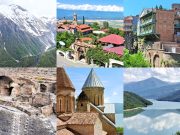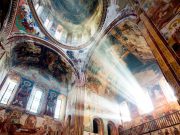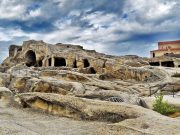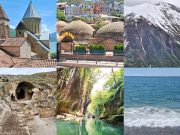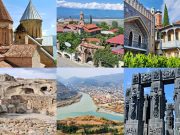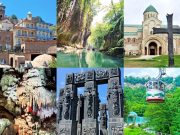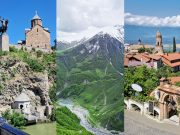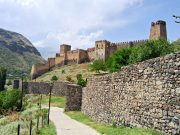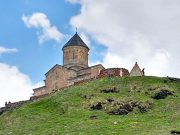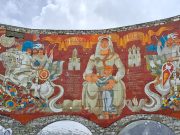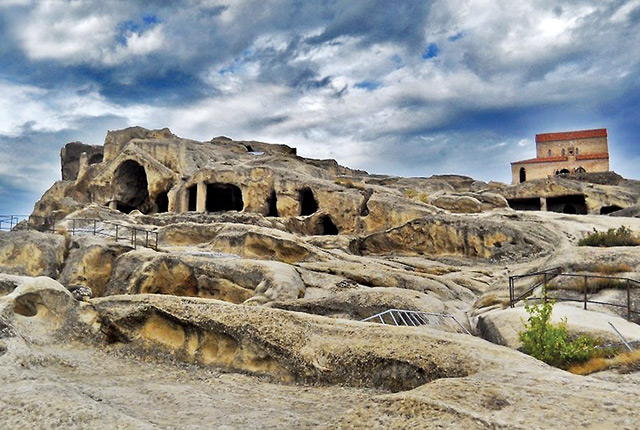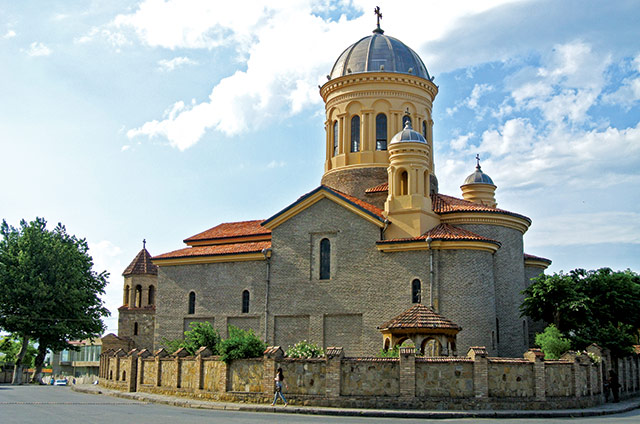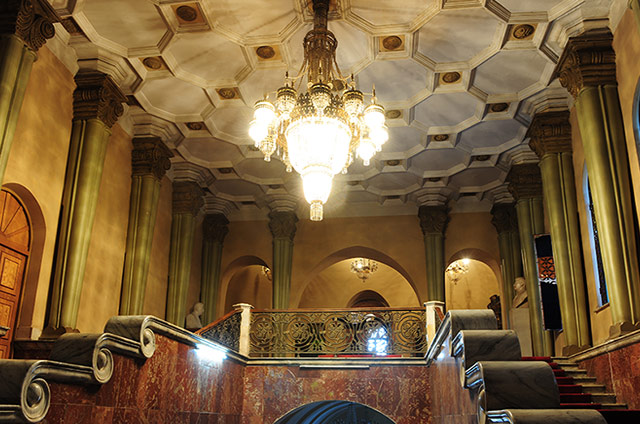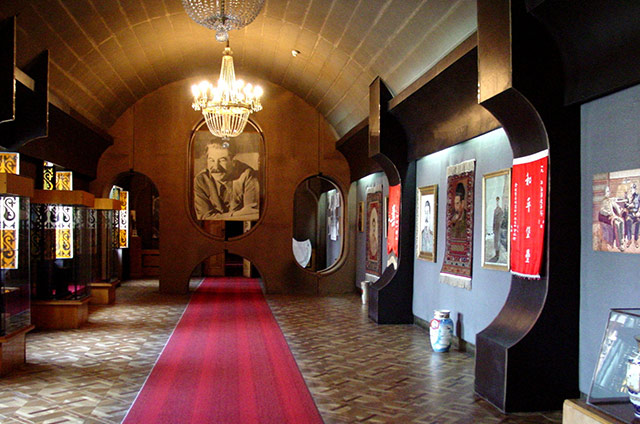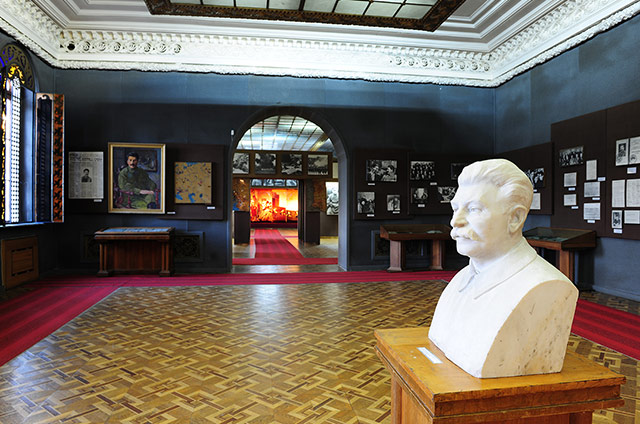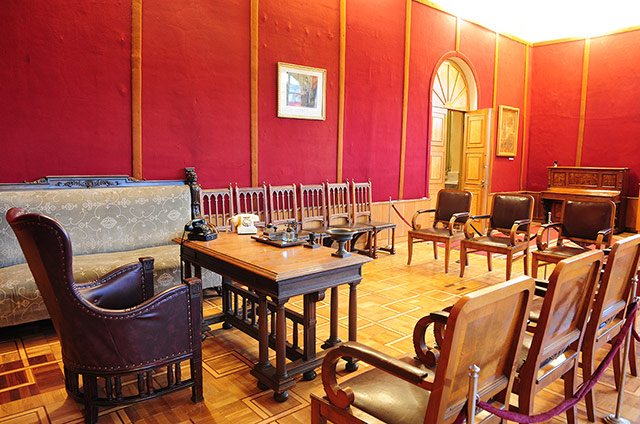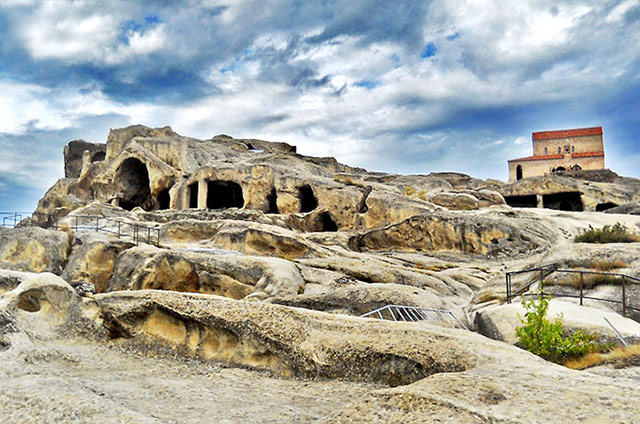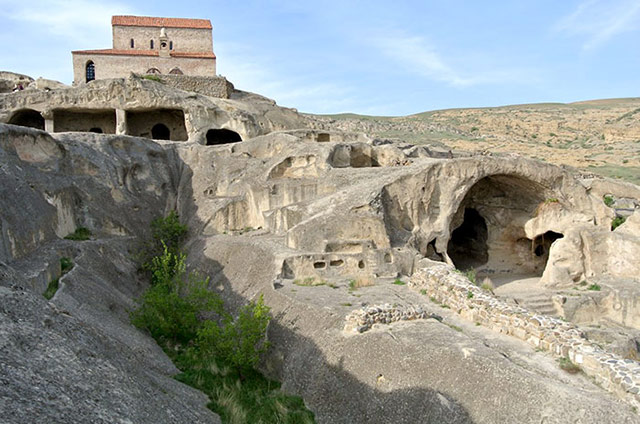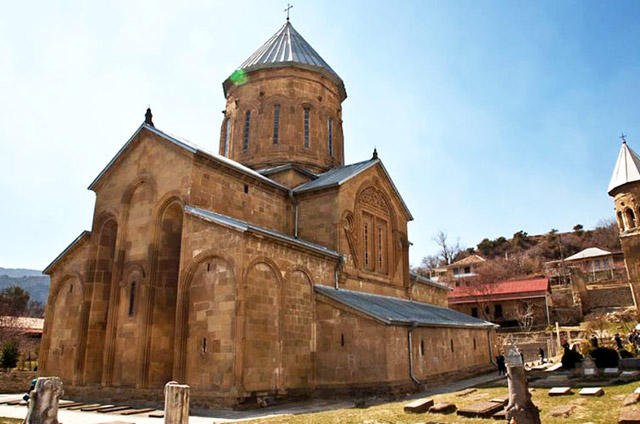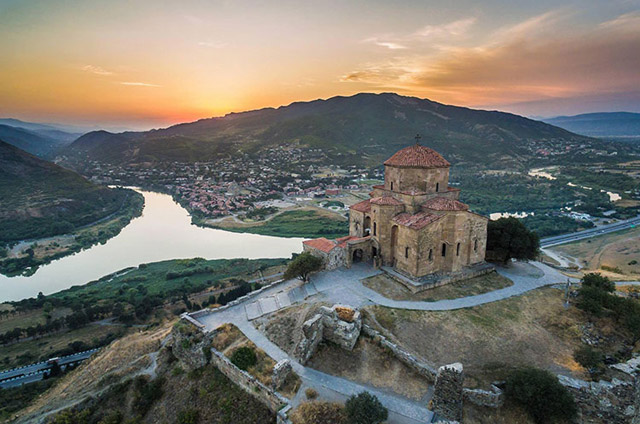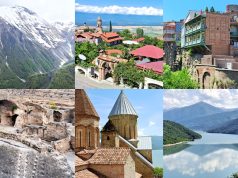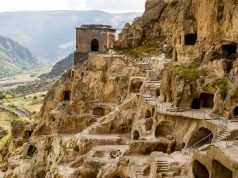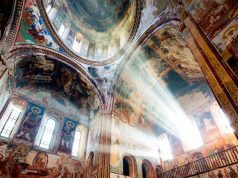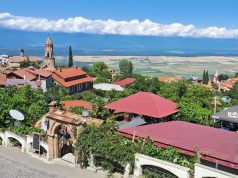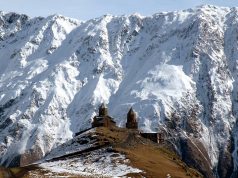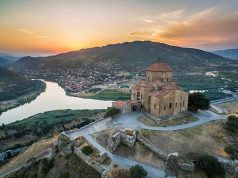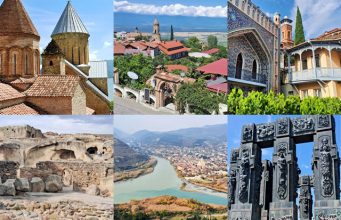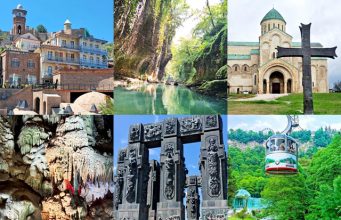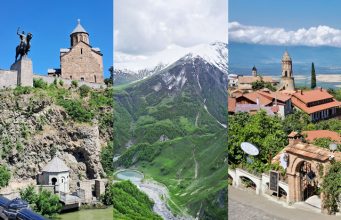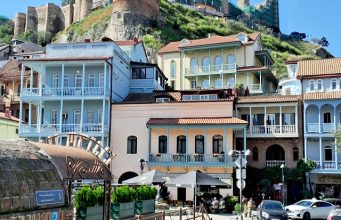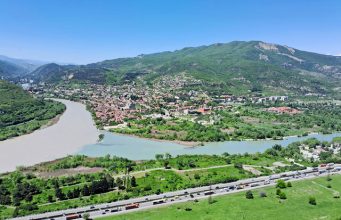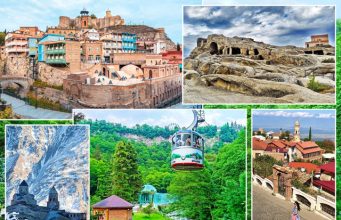Jvari Monastery – Uplistsikhe – Mtskheta – Svetitskhoveli
After breakfast, departure towards Uplistsikhe.
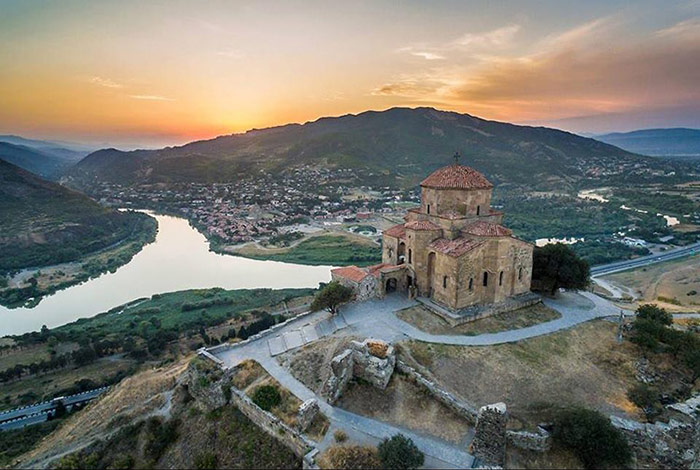
Jvari Monastery (VI century) is located on the top of a mountain at the confluence of the Kura and Aragvi rivers near Mtskheta. From the mountain there is a stunning view of Mtskheta and you can see how the streams of two rivers – the Kura and Aragvi – merge. By 545, a small temple already stood on the “cross” mountain; it is now in ruins. A larger church in the form of a tetraconch, consecrated in honor of the Exaltation of the Holy Cross, was erected between 586 and 604.
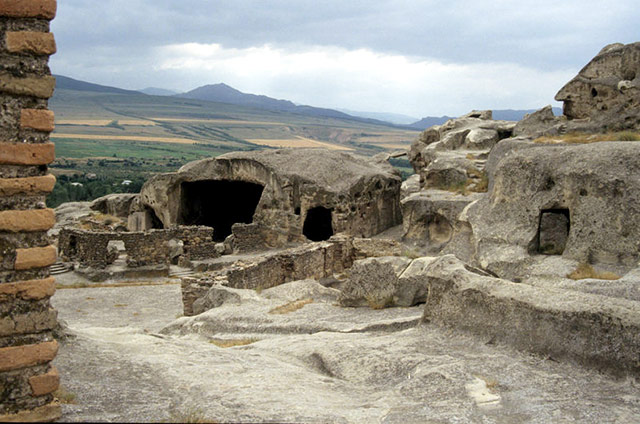
Excursion to Uplistsikhe
Uplistsikhe – one of the rarest monuments in the world, the oldest cave city, one of the first cities in Georgia. Uplistsikhe is carved into the rock located 12 km east of the city of Gori, on the left bank of the Mtkvari River. The city arose at the end of II – at the beginning of the first millennium BC and contains various structures dating from the Early Iron Age to the Late Middle Ages. The uniqueness of the monument lies in the fact that, thanks to its structure, it retained the remains of architectural and religious buildings built over several millennia. In its heyday, Uplistsikhe included more than 700 caves and cave structures, of which only 150 have survived to date.
After man developed fertile lands in the Bronze Age, the cult center of the area was originally located on the Katlaniskhevi hill, which is located three kilometers west of Uplistsikhe. At the turn of the II and I millennia BC, a strong fire occurred on Katlaniskhevi, after which at the dawn of the Iron Age the pagan cult center moved from there to Uplistsikhe.
During this period, in Uplistsikhe, a worship of a female solar deity was recorded, the symbol of which was also a wheel later. The only image of this deity (clay figurine) was found on the Katlaniskhevi hill. There are archaeological data on the Uplistsikhe trade relations of this period with Urartu and Medes.
The settlement was called Uplistsikhe already in the ancient period. Mention of medieval Georgian historians connect the foundation of the settlement with the mythological “Uplos, the son of Mtskhetos”. Based on this, the name “Uplistsikhe” is associated with Uplos. Nevertheless, in most popular sources, another interpretation of the name has been fixed, made on the basis of the modern Georgian language, in which “Uplos” is associated with the common noun “lord”: Uplistsikhe – “Fortress of the Lord”.
Next, we will visit the ancient capital of Georgia, now the holy city of Mtskheta.
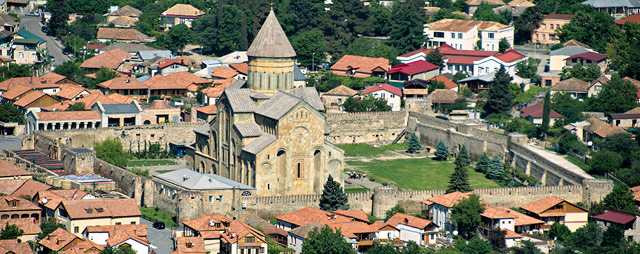
Svetitskhoveli Cathedral – the Patriarchal Cathedral of the Georgian Orthodox Church, in honor of the Twelve Apostles, built in 1010-1029, on the site of the first Christian church in Georgia, built over the grave of St. Sidonia. Known as the burial site of the claimed Christ’s mantle, Svetitskhoveli has long been one of the principal Georgian Orthodox churches and is among the most venerated places of worship in the region. One of the foundations of the temple was the sacred trunk (cedar), which stood at the burial place of the robe of Christ, by which the temple is named (light – pillar, Tskheveli – life-giving). One of the foundations of the temple was the sacred trunk (cedar), which stood at the burial place of the robe of Christ, by which the temple is named (“Sveti” – pillar, “Tskhoveli” – life-giving). Svetitskhoveli is recognized by UNESCO as a World Heritage Site.
Lunch at your discretion (approximately $15 per person).
In the evening we will return to Tbilisi.
Tour duration: 8 hours.
Cost of an individual excursion:
for 2 persons: 270 $
for 4 persons: 360 $
for 6 persons: 390 $
for 8 persons: 520 $
for 10 persons: 600 $
The price includes:
Professional guide services,
Transport service,
Entrance tickets to Uplistsikhe and local guide services.
If desired, the excursion can include a visit to the Stalin House Museum in the city of Gori:
The museum has three departments, all of them located in the central area of Gori. The exhibition contains many things that actually or supposedly belonged to Stalin, including some furniture from his offices, and gifts. There are also a large number of illustrations, paintings, documents, photographs and newspaper articles on display. In front of the main museum is the house in which Stalin was born and spent the first four years of his life. The museum displays Stalin’s personal railway carriage, which he used since 1941, including for trips to the Tehran and Yalta conferences.
Entrance fee: 15 GEL.
Day trip from Tbilisi to Uplistsikhe cave town and Mtskheta will give you a sea of impressions and an unforgettable experience.



